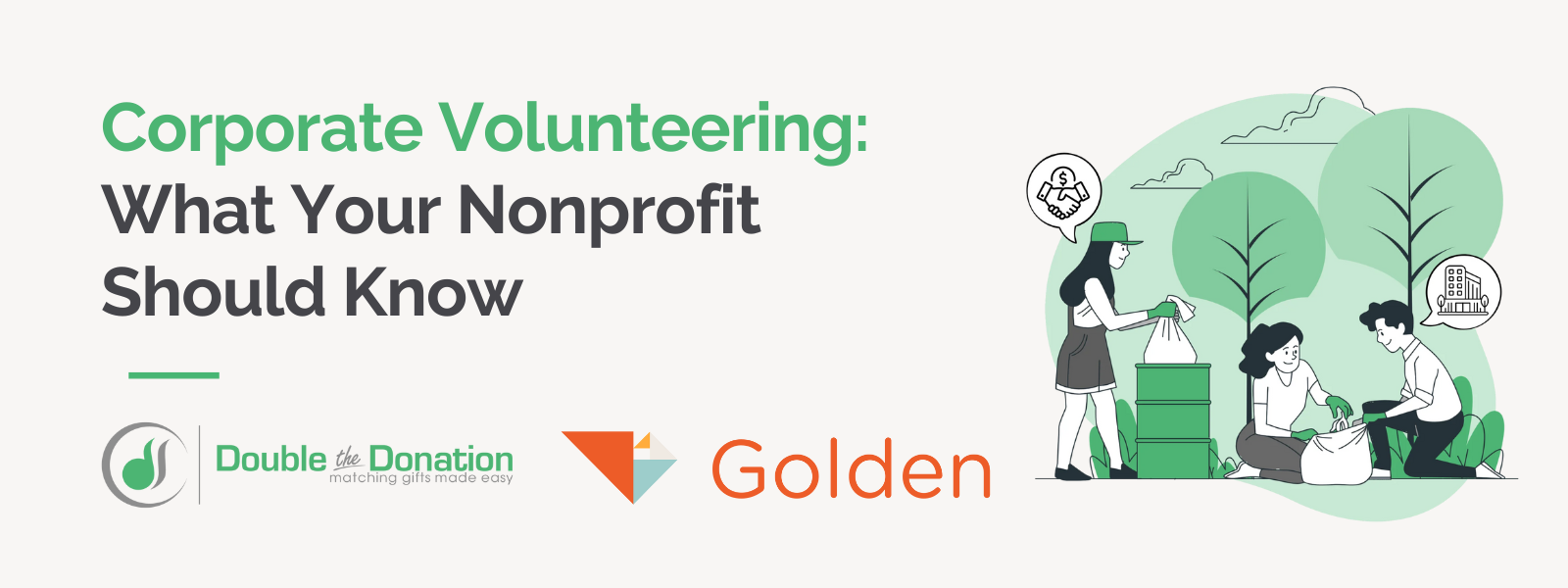Volunteer background checks are more than a formality—they’re the foundation of safe, trustworthy programs. Paper files and spreadsheets make the process slow and risky, while Golden builds checks directly into digital profiles, with consent, results, and communication all in one place. That means faster onboarding, fewer errors, and stronger trust with volunteers, donors, and the community.
Volunteer Background Checks: What Nonprofits Need to Know
A volunteer background check might sound like another box to tick, but in practice, it’s the backbone of safe, reliable programs. Without it, you’re mostly hoping that trust alone will carry the day. That can work for a while, until it doesn’t.
Most nonprofits already use a volunteer application template to collect the basics: name, availability, maybe a few skills. That’s important. But without a screening step built into the process, you risk leaving gaps that can affect not only safety but also community trust.
And the way you handle the entire process matters a lot. If you’re working on paper files or digging through spreadsheets, it gets slow, messy, and most of the time the stress becomes very frustrating. Golden designed its system to make checks feel less like a chore and more like part of a natural onboarding flow.
Why Background Checks Are Essential
Think about where volunteers serve: food pantries, schools, aftercare programs, and hospitals. These are sensitive spaces. A missed red flag in screening can put vulnerable people in harm’s way.
Background checks do a few things at once. They protect safety. They build trust with donors and the wider community. And, maybe less obvious but just as real, they show volunteers that you’re serious about accountability.
Golden makes this practical by embedding background checks directly into volunteer profiles. Screening status shows up next to schedules and hours, no side spreadsheets to maintain, no chasing down forms. It’s all connected.
If you’re curious about how that looks in practice, check out this guide on volunteer management best practices that walks through the full workflow.
Legal and Ethical Considerations
Here’s where things get tricky. You can’t just run checks however you like.
Volunteers have to give consent. Nonprofits need to comply with laws like the Fair Credit Reporting Act (FCRA) in the U.S., and ethically, results should be used only for legitimate purposes. That means secure storage, fair handling, and no cutting corners.
Golden’s digital flow helps with that. Consent is gathered inside the application, and data is stored with proper safeguards. There’s no loose paper sitting on someone’s desk or scanned PDFs floating around in email.
If you want to double-check broader nonprofit compliance, the National Council of Nonprofits offers a solid overview of regulations and best practices. It’s worth bookmarking if you’re building out policies.
How to Streamline the Process

Screening by hand is slow. You might spend days chasing forms, waiting for phone calls, or trying to figure out where someone’s application went. That’s wasted time.
Golden flips that by pulling everything into one system:
- The volunteer application template is digital, with consent built in.
- Background checks run directly through the same platform.
- Results attach to the volunteer’s profile automatically.
- Coordinators see everything in one dashboard: pending, cleared, flagged.
Imagine onboarding 50 volunteers for a weekend event. With paper, you’d be buried. With Golden, you glance at the dashboard, and the status is right there. It’s not just faster; it also reduces the “oh no, did we miss one?” panic.
Golden goes deeper here, too, screening ties into scheduling. You can’t assign a volunteer to a role until their check clears. That kind of automation prevents mistakes that might otherwise slip through. See how the volunteer scheduling tools connect with checks to keep the process tight.
Communicating Results with Volunteers
The truth is that telling a volunteer that something in their background disqualifies them is awkward. Nobody likes that conversation; the good news is that there are ways to make it less painful.
A few rules of thumb:
- Be upfront early; don’t surprise someone halfway into service.
- Keep results private. No group emails.
- Be consistent. If a certain offense disqualifies one person, it should disqualify everyone.
- Give context. A clear explanation of policy goes a long way.
Golden helps by keeping all communication inside the platform. You can message volunteers directly, with records kept securely. That avoids both accidental oversharing and the endless email threads that tend to get lost.
This ties neatly into Golden’s volunteer engagement tools, which are designed to strengthen the volunteer experience even in sensitive moments.
Building Trust Through Systems
Background checks are only part of the equation; safety is also dependent on time tracking, policies, and an agreed communication system.
Golden brings all these features together, and rather than running in circles with sign-in sheets, random apps and incomplete spreadsheets, you have everything running on one platform; hours tracked, applications stored and the entire background checks you logged.
If you’ve ever pieced together reports late at night with numbers that don’t quite add up, you’ll know how valuable that kind of system is. It’s the difference between firefighting and feeling in control. For a closer look at how time tracking ties into safety, check out this article on volunteer time tracking.
Making Background Checks Part of the Bigger Picture
A background check isn’t the finish line. It’s one piece of a bigger system that keeps programs steady and trustworthy. To be fair, some nonprofits treat it like a stand-alone task; you run it once, file the result, and move on. But the real strength comes when it’s part of a larger flow.
Think about it. You collect applications, you track hours, you schedule shifts. All of that connects. And when screening sits in the same place, you don’t just know who showed up, you know they’re cleared, logged, and ready. It takes away that uneasy feeling of “did we miss something?” that coordinators often carry around.
Remember, but safety isn’t just about catching red flags. It’s also about showing volunteers, donors, and the community that you’re running things responsibly. That’s why I think Golden’s approach matters. It doesn’t bolt background checks on the side. It folds them into a system that already handles time tracking, engagement, and reporting.
Maybe you’re still managing with paper sign-ins or scattered apps. They work, sometimes. But gaps creep in. Records don’t add up, hours get lost, and trust can slip before anyone notices. When you pull it all together in one place, like Golden does, you get more than smooth operations; you get peace of mind. And that’s hard to put a price on.


